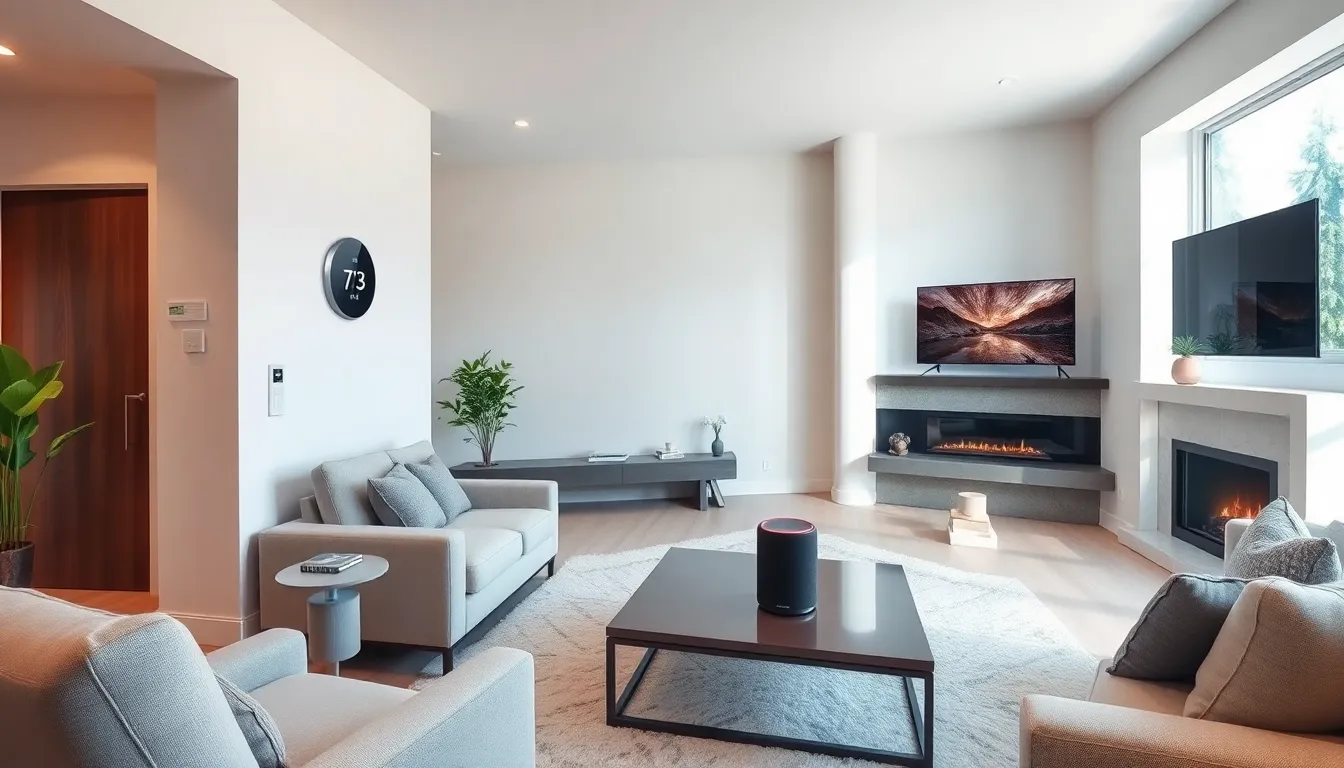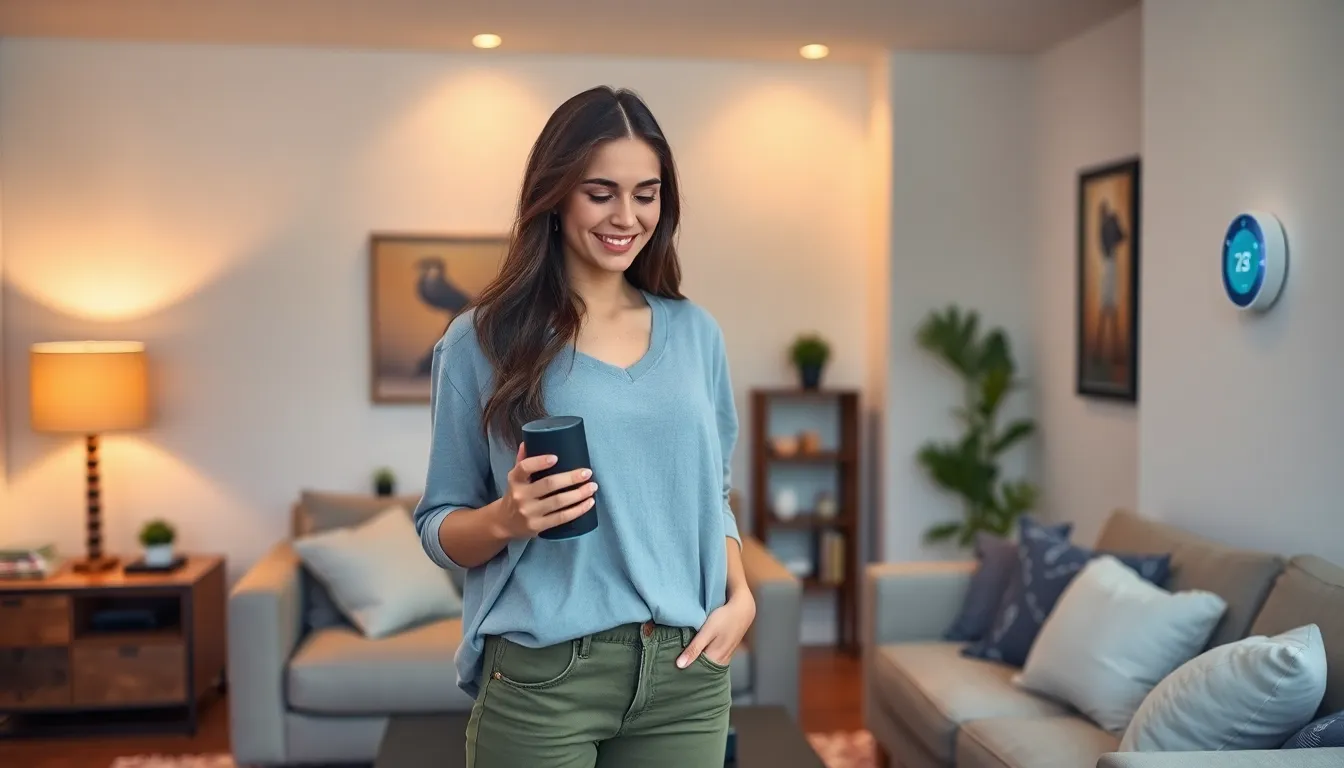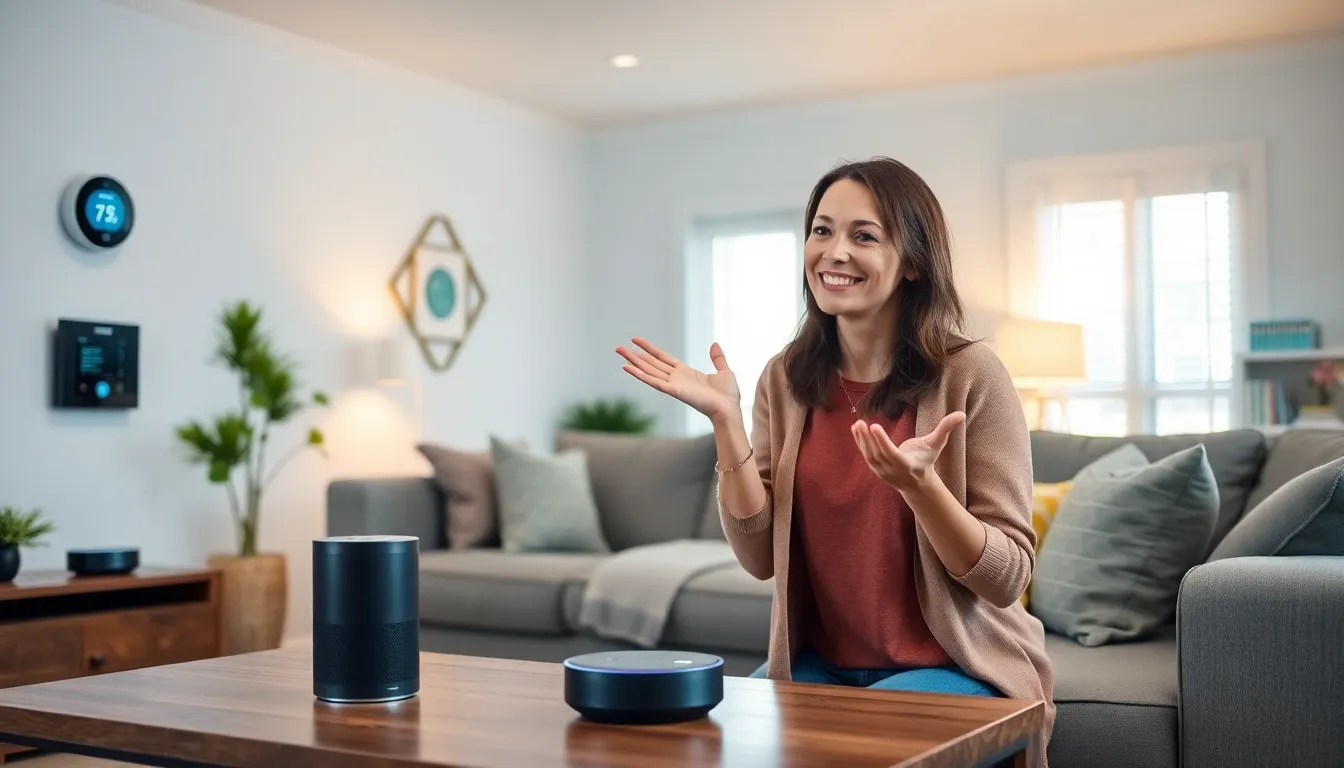Imagine walking into your home and having it greet you like an old friend. The lights dim perfectly as your favorite playlist starts playing, all while your coffee brews itself. Sounds like a scene from a sci-fi movie, right? Welcome to the world of smart home devices, where convenience meets a little bit of magic.
Integrating these tech wonders into daily life isn’t just about showing off your gadgets at dinner parties. It’s about creating a seamless environment that adapts to your needs. From smart speakers that understand your every command to thermostats that know when you’re feeling chilly, the possibilities are endless. So, why not dive into the future and turn your home into a smart haven? After all, who wouldn’t want a house that practically runs itself?
Table of Contents
ToggleUnderstanding Smart Home Devices
Smart home devices represent a collection of technologies designed to enhance convenience and efficiency within a household. These devices interact through a network, enabling seamless communication and control.
What Are Smart Home Devices?
Smart home devices include a variety of products like smart speakers, cameras, lights, and thermostats. These gadgets utilize internet connectivity to perform tasks automatically and respond to user commands. Smart speakers like Amazon Echo and Google Nest enable voice control for music, information, and smart home management. Security cameras monitor home safety in real-time while smart lights provide customizable lighting based on user preferences. Additional items, such as smart locks and smart plugs, further contribute to home automation, offering unique functionalities that enhance user experience.
Benefits of Smart Home Integration
Integrating smart home devices offers numerous advantages for homeowners. Enhanced convenience ranks as a primary benefit, allowing users to control devices remotely. Energy efficiency stands out as another perk; smart thermostats can optimize heating and cooling, resulting in lower energy bills. Increased home security also plays a critical role; smart cameras and locks enable real-time monitoring and alerts. Ultimately, improved lifestyle convenience, energy savings, and security assurance create a compelling case for adopting smart home technologies.
Types of Smart Home Devices

Smart home devices come in various categories that enhance daily life. Each type serves a unique purpose, contributing to convenience, efficiency, and security.
Security Systems
Security systems play a vital role in safeguarding homes. Smart cameras provide real-time video feeds, allowing users to monitor their property remotely. Sensors for doors and windows alert homeowners about unauthorized access. Motion detectors enhance protection by notifying users of movement in designated areas. Integration with alarms and lighting can be achieved for a comprehensive security solution. Many systems can connect to smartphones, enabling instant alerts and control from anywhere.
Environmental Controls
Environmental controls significantly improve energy efficiency. Smart thermostats learn users’ preferences, optimizing heating and cooling schedules for comfort. These devices often analyze energy consumption, suggesting adjustments to reduce costs. Smart blinds and shades automatically adjust according to sunlight, enhancing interior temperature management. Indoor air quality can be monitored through smart sensors, prompting ventilation when necessary. Each feature contributes to a healthier and more sustainable living environment.
Entertainment Devices
Entertainment devices elevate the home experience through connectivity. Smart speakers allow seamless music streaming from multiple sources. Users can control playlists and adjust volume through voice commands or apps. Smart TVs integrate with various streaming services, offering extensive content options. These devices often support screen mirroring, enhancing viewing flexibility. Home theater systems connected to smart technology provide immersive audiovisual experiences, transforming how users enjoy media.
Steps to Integrate Smart Home Devices
Integrating smart home devices enhances convenience and improves overall living quality. Following these steps ensures a smooth transition into a connected home.
Assessing Your Needs
Before purchasing, determine which devices align with lifestyle. Identify specific goals like increased security or energy efficiency. Consider the types of tasks to automate such as lighting control or temperature regulation. Evaluate existing devices to ensure compatibility with new technologies. Prioritizing needs leads to a focused selection of smart home devices.
Choosing the Right Hub
Select a hub capable of managing multiple devices. Look for compatibility with diverse smart devices including lights, speakers, and thermostats. Ensure it supports preferred voice assistants like Alexa or Google Assistant. Research features such as remote access or routines integration. A suitable hub simplifies control and streamlines the smart home experience.
Installation Process
Begin by following the manufacturer’s instructions for each device. Connect devices to the chosen hub to establish a seamless network. Test devices individually for functionality prior to full integration. Organize devices by room for efficient management through the hub. Conduct regular updates for device software to maintain security and improved performance.
Challenges in Integrating Smart Home Devices
Integrating smart home devices presents several challenges that users often encounter.
Compatibility Issues
Compatibility issues frequently arise due to the diverse range of manufacturers and protocols. Some devices may use proprietary systems, limiting their communication with other smart home devices. For example, a security camera from one brand might not connect seamlessly with a smart hub from another. Users often face hurdles when trying to coordinate devices across different ecosystems. Selecting devices that conform to widely accepted standards, like Zigbee or Z-Wave, typically mitigates these issues. Ensuring compatibility before purchase saves time and frustration during setup.
Security Concerns
Security concerns often plague smart home integrations, as connected devices increase vulnerability to cyber threats. Unauthorized access to cameras, door locks, or thermostats can result in significant privacy breaches. Many devices lack robust encryption, making them susceptible to hacking. Regular updates of firmware help address security flaws, but these updates are often overlooked. Additionally, creating strong, unique passwords for devices is essential in safeguarding against potential intrusions. Maintaining awareness of security best practices enhances safety throughout the smart home ecosystem.
Integrating smart home devices can significantly elevate the quality of life for homeowners. By embracing these technologies, individuals can enjoy enhanced convenience, improved energy efficiency, and increased security. The journey toward a connected home involves careful planning and consideration of individual needs, ensuring that each device complements the overall system.
While challenges like compatibility and security concerns exist, they can be effectively managed with the right approach. Prioritizing standardized devices and maintaining robust security practices will help create a seamless and safe smart home environment. Ultimately, the benefits of smart home integration far outweigh the challenges, making it a worthwhile investment for modern living.





